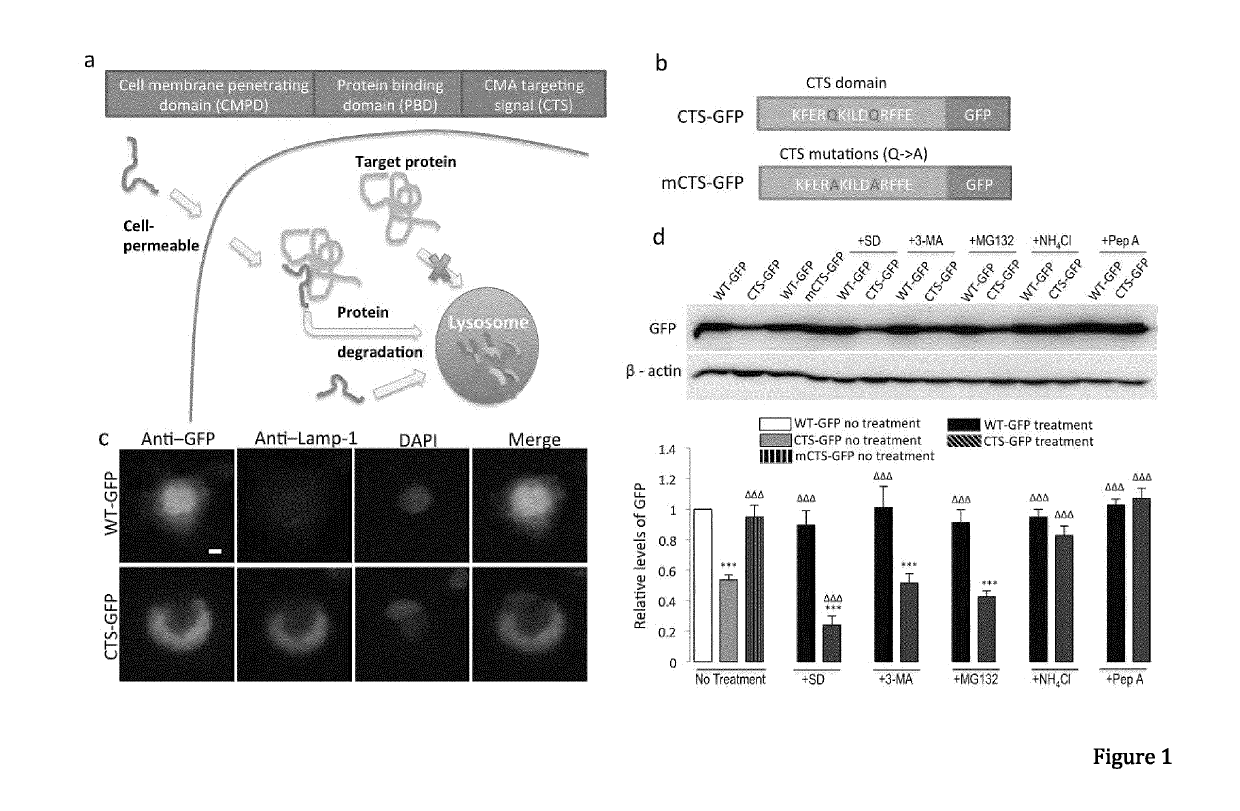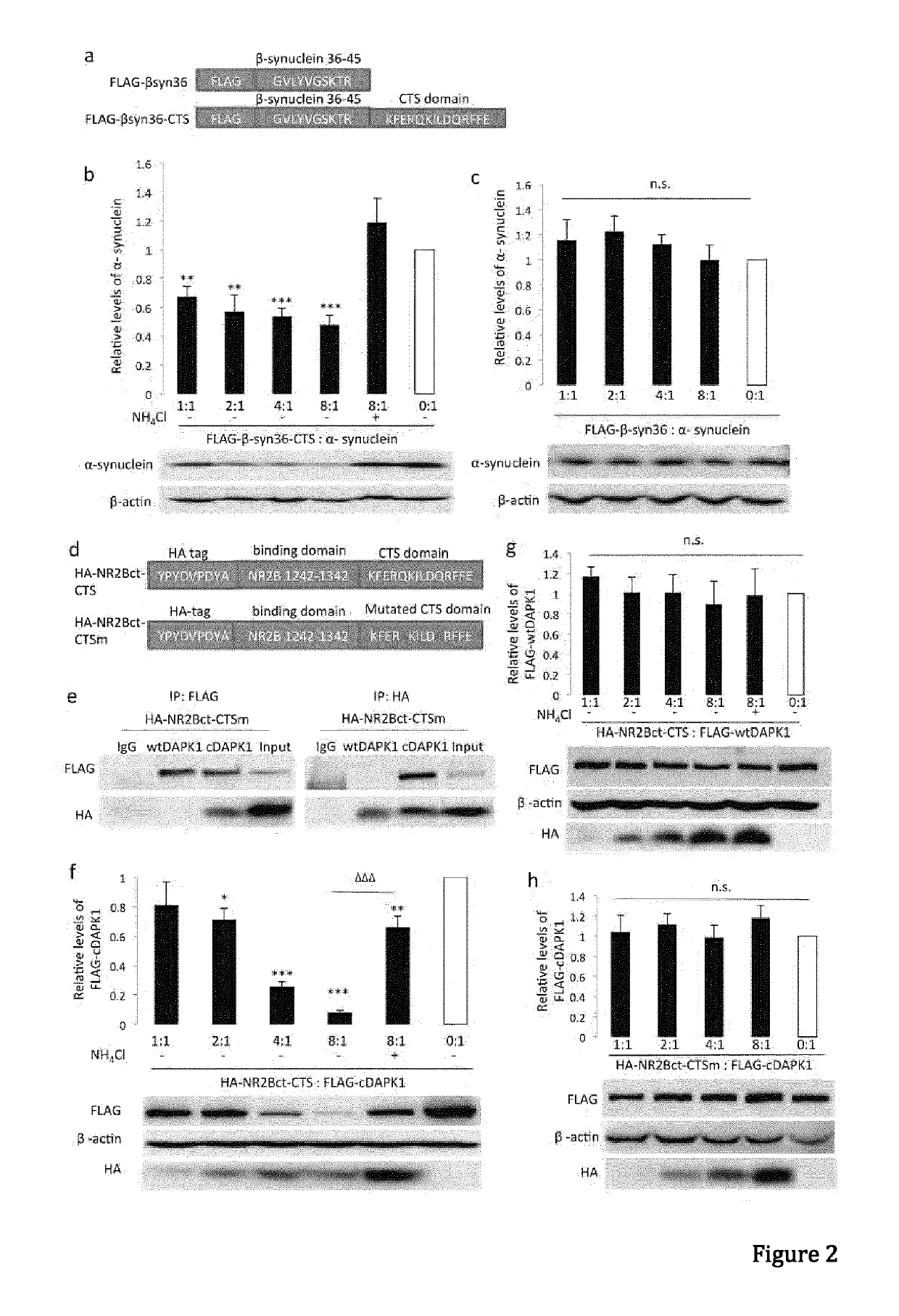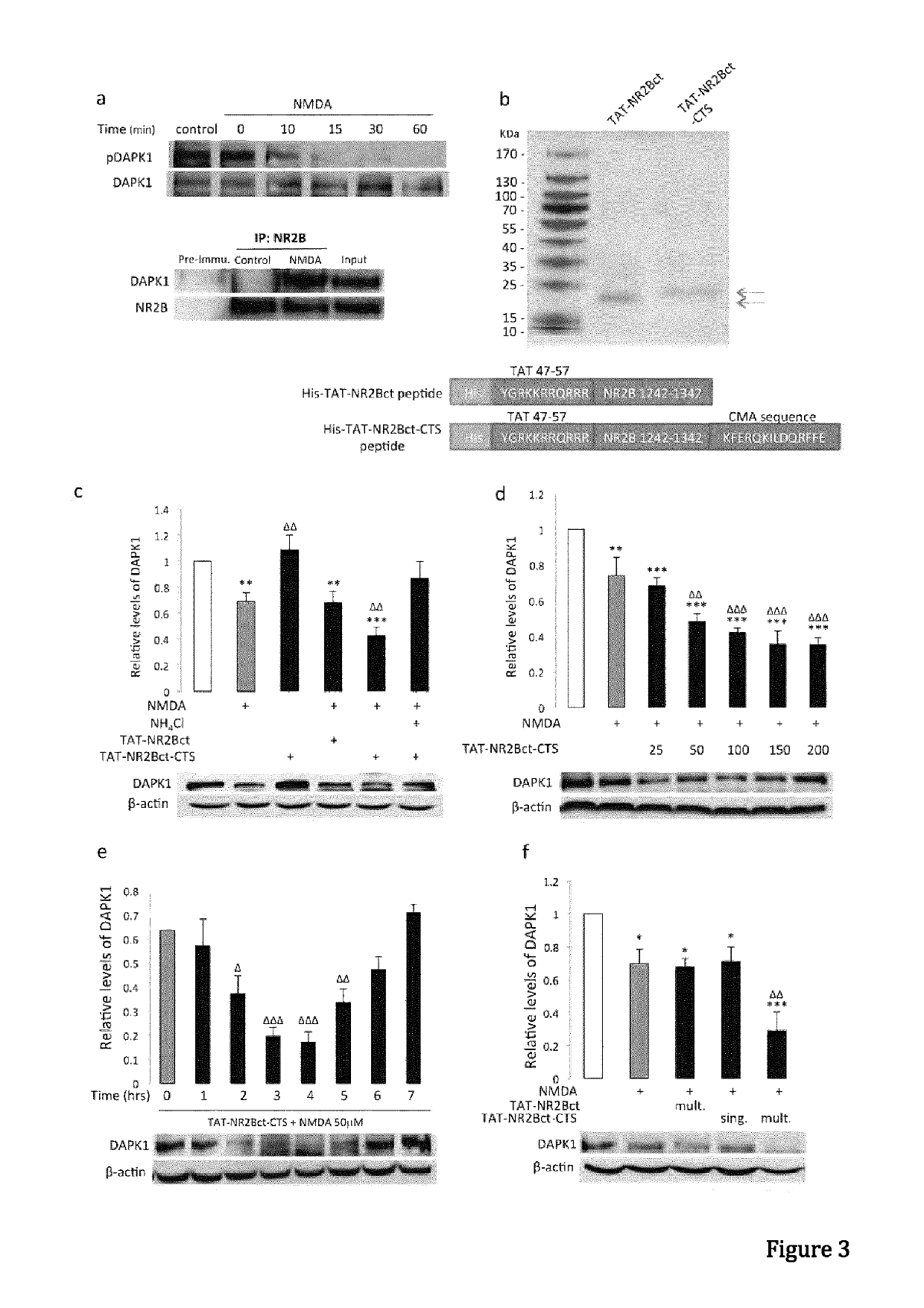Peptide directed protein knockdown
a peptide-directed, endogenous technology, applied in the field of molecular cell biology, can solve the problems of stumbling blocks in the therapeutic use of human diseases, lack of specificity, speed, reversibility and tunability, etc., and achieve the effect of rapid and reversible knockdown
- Summary
- Abstract
- Description
- Claims
- Application Information
AI Technical Summary
Benefits of technology
Problems solved by technology
Method used
Image
Examples
working examples
[0098]Materials and Methods
[0099]General Antibodies and Reagents.
[0100]Anti-GFP (Clontech, 632381), anti-α-synuclein (BD Transduction Laboratories, 610786), Monoclonal anti-FLAG M2 antibody (Sigma-Aldrich, F1804-200UG), anti-DAPK1 (Sigma, D1319-200UL), Monoclonal anti-phospho-DAPK1 (pSer308, Sigma, D4941), anti-NR2B (lab generated), anti-HA (Roche applied science, 11867431001), anti-lamp1 (Abcam, ab13523), anti-GAPDH (Abcam, ab9485), anti-actin (Abcam, ab8227), anti-lamp2a (Abcam, ab18528), anti-Labmin B1 (Abcam, ab16048), anti-HSP90 (BD Transduction Laboratories, 610418), anti-VDAC1 (Porin) (MitoSciences, MSA03). Antibodies were validated for their intended purpose (immunoblotting, immunocytochemistry, immunohistochemistry and co-immunoprecipitation), in accordance with the manufacturer's product sheet and / or laboratory procedures. Ammonium chloride (Sigma, A0171), 3-methyladenine (Sigma, M9281), MG132 (Sigma, C2211), Pepstatin A (Sigma), N-Methyl-D-aspartic acid (NMDA, Tocris Asc-...
PUM
| Property | Measurement | Unit |
|---|---|---|
| pH | aaaaa | aaaaa |
| pH | aaaaa | aaaaa |
| speed | aaaaa | aaaaa |
Abstract
Description
Claims
Application Information
 Login to View More
Login to View More - R&D
- Intellectual Property
- Life Sciences
- Materials
- Tech Scout
- Unparalleled Data Quality
- Higher Quality Content
- 60% Fewer Hallucinations
Browse by: Latest US Patents, China's latest patents, Technical Efficacy Thesaurus, Application Domain, Technology Topic, Popular Technical Reports.
© 2025 PatSnap. All rights reserved.Legal|Privacy policy|Modern Slavery Act Transparency Statement|Sitemap|About US| Contact US: help@patsnap.com



